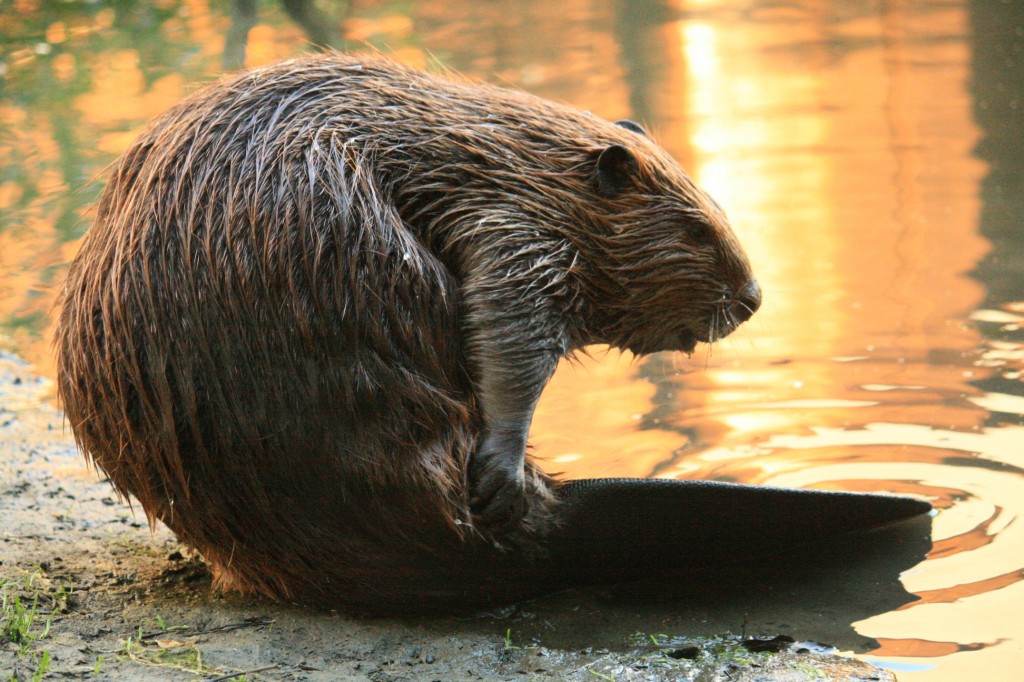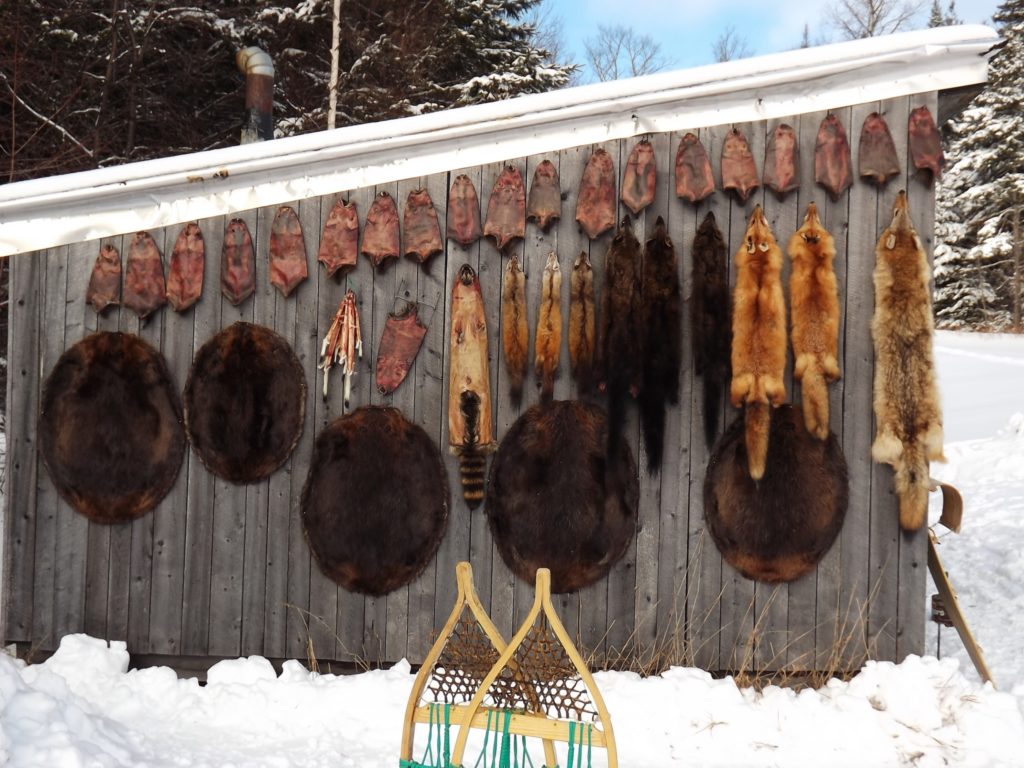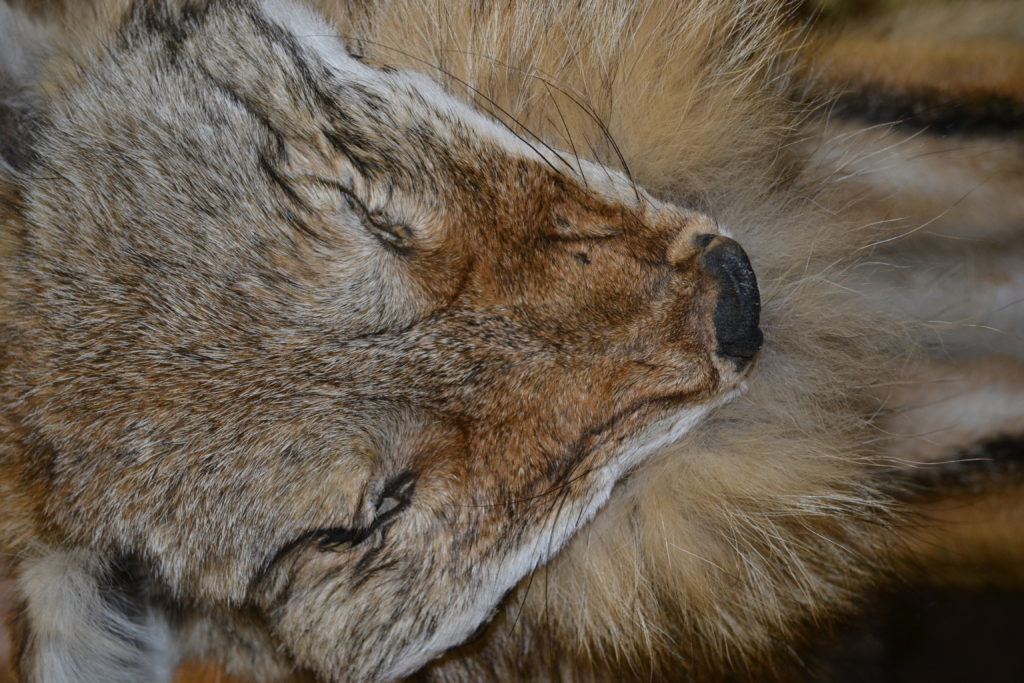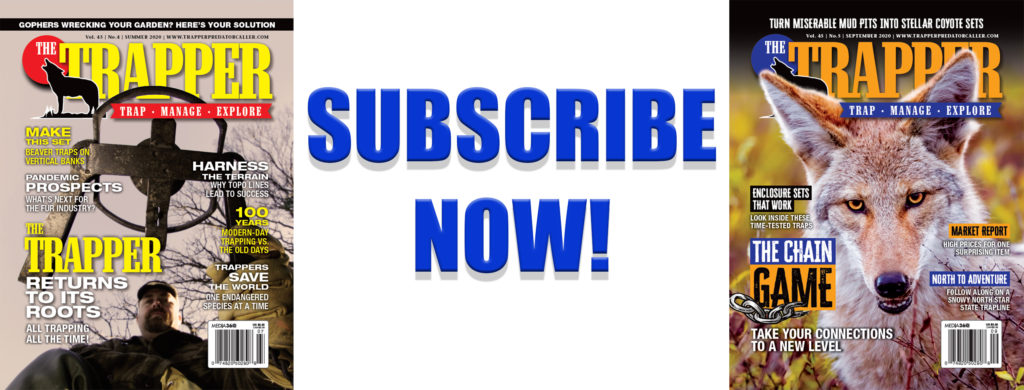By Serge Lariviére
Every trapper that I have met in the last few weeks has been talking about how happy and surprised they are about beaver prices. Small beavers, large beavers, damaged beavers, all selling at prices much higher than we have experienced in the past few years. The good news is that there is no shortage of beavers out there — and with low prices of past years, a lot of new beaver colonies were established and new land was flooded.
Beaver trapping is great for getting permission — because no one can wait too long when beavers start showing up on their property. Nice trees being cut, timber falling in odd places, beautiful valleys being flooded, and yes, culverts, pipes, bridges all being plugged and requiring great work (and expenses) to clear up. I know this firsthand — I left a 6-foot culvert unchecked for six months last year, and when my neighbor called to say his land was flooded, I knew right away where to go. I got there way too late, and the 12-foot section of culvert was packed full of mud and sticks from top to bottom, and yes, the access road to the property washed away. Beavers are great furbearers, but on the list of troublemakers — they rank way at the top. Good prices for them is a good thing for us trappers, but also a great thing for all landowners, highway maintenance crews, railroad companies, farmers, land managers, etc.
Beaver prices now are higher than in past years because of the felt made with the underfur that is used in the making of hats, hence the trade referring to the “hatter market.” Many cowboy hats are made with beaver felt, and the good news is that this market requires underfur — not leather — and therefore they do not incur the expensive tanning or dressing fees.
Tanning beaver skins is much more difficult than tanning other skins, because of the elastic nature of beaver leather. For this reason, tanning a beaver is more complicated than tanning a mink, or even a coyote. But the hatter market shaves the hairs right off the leather, and fur — not leather and fur — is their base product. This is also why prices paid in recent months seem to forgive a few hole and bite marks. If the fur is there, hatters will pay for it. But the key again is fur density — especially underfur — so prime pelts again are key to this industry.
In terms of actual numbers, I think it is safe to expect prices resembling this past selling season. Fur Harvesters Auction (www.furharvesters.com) just held their last sale of 2023 in May, and they reported prices averaging in the $27 to $30 range — which is great in current market conditions. The price of castoreum declined a bit, but still sold in the $50 to $75 range for well-handled glands, and I expect this will also hold for a while.
Combining pelt and castor glands gives you a $40 price for a large, prime beaver, and I think most trappers will be happy to go to work at such prices. Living up North, I also know several trappers who develop meat markets either for human consumption (the most lucrative — with prices of $20 to $50 for a clean carcass, frozen and properly wrapped) or for dog food or bear bait ($5 to $20 per carcass depending on the local demand and supply). Beavers also make great bait for every carnivorous animal out there, so if you have them on your trapline, hitting beaver will be financially wise!
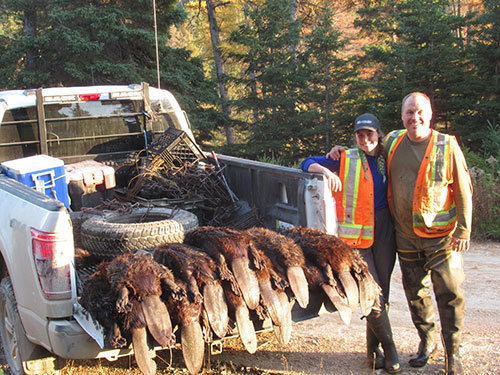
The author with his daughter, Veronique, on the successful beaver line. Photo credit: Serge Lariviere
The market for long-hair furs continues to suffer with the Russia/Ukraine conflict. Marten and fisher advanced in price at the last few sales, but not to the point of being hot. The coyote market for parka trim is over, most buyers in the East pay $5 to $20 a skin, and Westerns will go from $20 to $40 on average. Red foxes, raccoons, gray foxes are stuck at extremely low levels, and no rumors of positive change are forecasted for these species. The same goes for muskrat, mink and otter, the market is low and should stay there for a season or two while the ranch mink market struggles to recover.
Taxidermy species hold well in these economic times, because there is a limited supply of these skins and the market is more local than international. Tanned wolf skins, wolverines, bears, even beautiful skunks seeem to bring in good prices simply because there are few such pelts available, and the tourist trade for wall-hangers is constantly looking for new offerings. Hunting and fishing camps, ski resorts, country stores and tourist stores in historic sites all seem to love offering tanned pelts for the tourist crowds. If you can get your foot in the door for some of these markets, that may be a worthwhile partnership to explore.
October is the month of final preparation for most trappers, and as you finalize your plans, do not forget that prime fur is the easiest product to sell in tough markets, so focus on quality skins — and get those beaver traps out!
